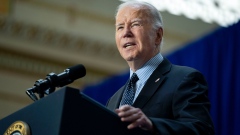Jan 20, 2023
Retail faces headwinds despite stronger than expected November sales: Consultant
, BNN Bloomberg
We still fully expect it to be a challenging year for most retails: National retail leader
Despite November retail sales figures that came in better than expected, the industry faces headwinds amid high inflation and interest rates, according to one retail consultant.
Retail sales fell 0.1 per cent in November, with some of the sharpest declines occurring in food and beverage sales. The November sales figures came in lower than the 0.5 per cent decline estimated by Statistics Canada and a Bloomberg survey of economists. Core retail sales fell 1.1 per cent in November, marking the largest decline in 11 months.
“I can tell you, based on the conversations that we're having with our clients across the various retail sectors, there's definitely [a] general concern that the consumer continues to be pinched,” Marty Weintraub, a national retail leader at Deloitte Canada’s consulting practice, said in an interview with BNN Bloomberg Friday.
Despite the most recent figures from Statistics Canada “being a little more favourable than expected,” Weintraub said he sees headwinds in the retail sector and anticipates a challenging year for many in the industry.
“We have over 43 per cent of Canadians that say they're going to struggle to pay down their debt in the coming months, a third are saying we’re not going to be able to afford [or] we’re going to delay major purchases or big-ticket purchases,” he said.
DECEMBER ESTIMATES
Following a sales decline in November that came in softer than expected, Statistics Canada estimated that retail receipts increased by 0.5 per cent in December.
“Still, a positive flash estimate for December suggests sales recovered in both nominal and real terms to close out the year, as Canadian consumers continue to prove resilient in the face of aggressive rate hikes,” Shelly Kaushik, an economist at BMO Capital Markets, said in a note Friday.
UNEMPLOYMENT
Weintraub said mixed signals for the retail industry can be seen in Canada’s unemployment levels, which have remained low during economic uncertainty.
“I think from an unemployment perspective, that's what's unique right now versus previous economic downturns where unemployment levels are not where they are right now,” he said.
“What we're going to see is, things are still working, so they [consumers] will still continue to spend, they're just going to slow down that spend and probably protect their savings a little bit.”
If consumers can’t protect their savings they are likely to dip into them, which could drive consumer spending in 2023, Weintraub said.






